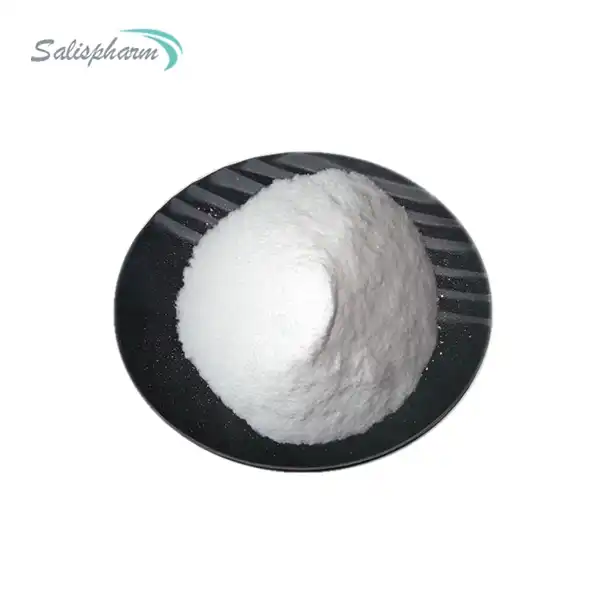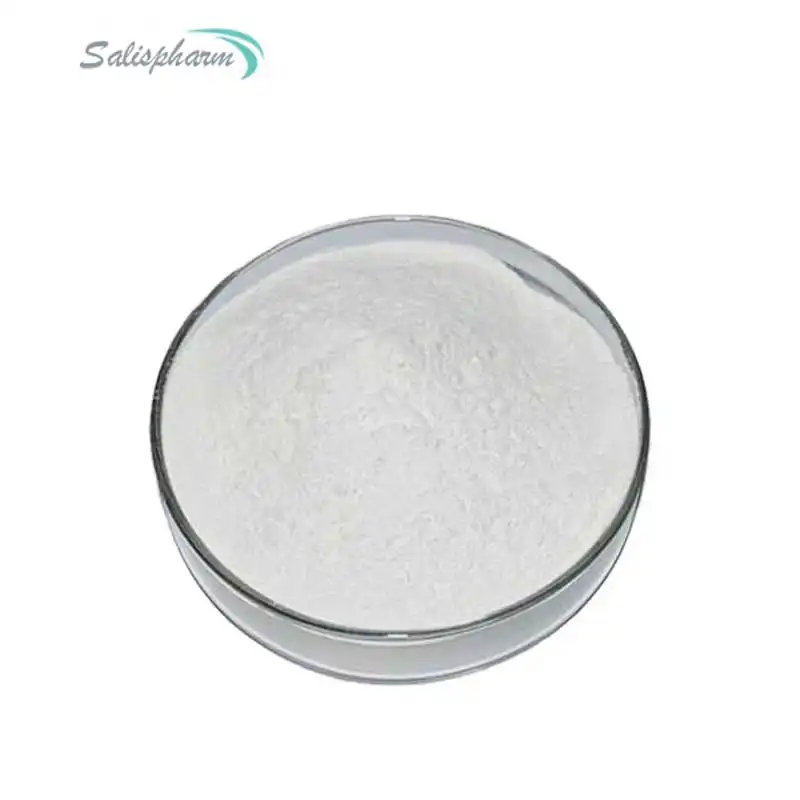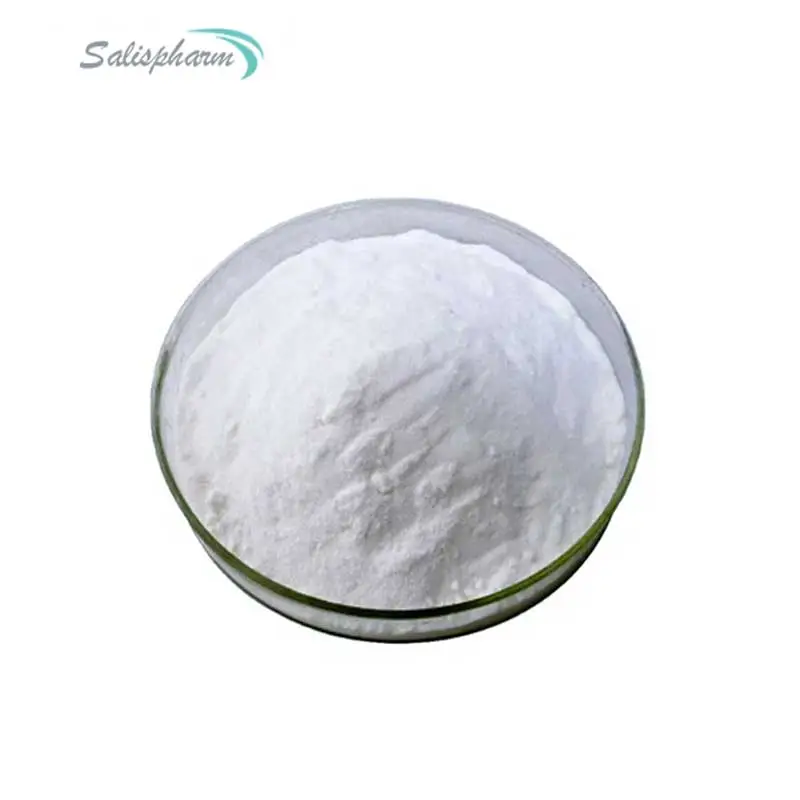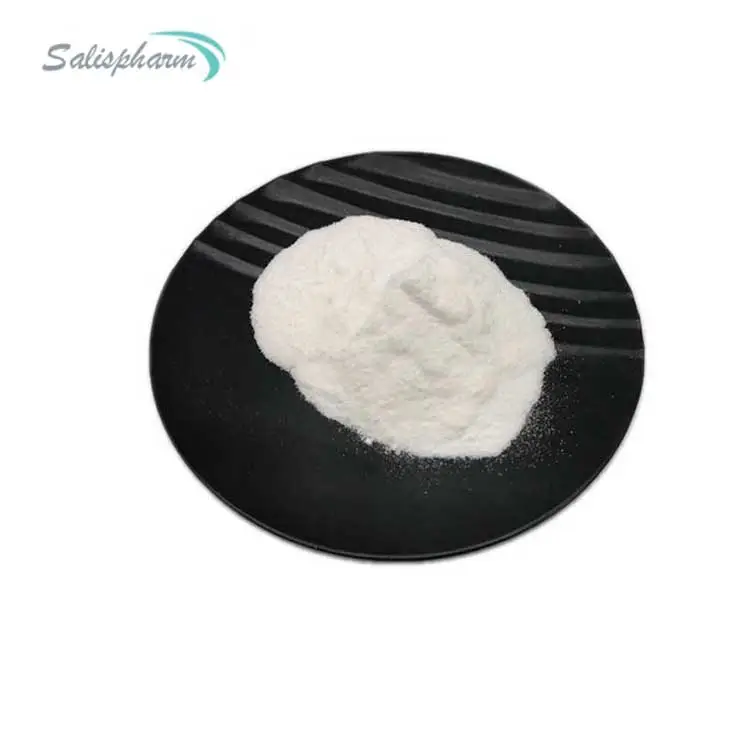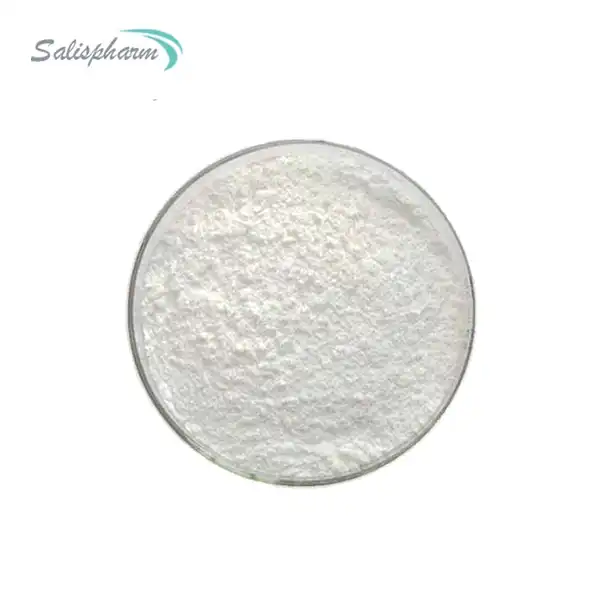Chlorhexidine diacetate, a biguanide antiseptic renowned for its broad-spectrum antimicrobial activity, plays a crucial role in medical and dental settings. Its solubility profile is a key factor that influences its formulation, application, and effectiveness in various healthcare products. Chlorhexidine diacetate exhibits moderate solubility in water, with approximately 1.9% w/v at 20°C. This solubility increases with temperature, reaching about 3.3% w/v at 37°C, which is close to body temperature.
The solubility of chlorhexidine diacetate is pH-dependent, with maximum solubility occurring in slightly acidic conditions (pH 5-7). At higher pH levels, the solubility decreases significantly due to the formation of the less soluble chlorhexidine base. This pH-dependent solubility profile is crucial for understanding the behavior of chlorhexidine diacetate in different physiological environments and for optimizing its formulation in various products.
In addition to water, chlorhexidine diacetate shows varying degrees of solubility in other solvents. It is highly soluble in ethanol and propylene glycol, moderately soluble in polyethylene glycol, and poorly soluble in nonpolar solvents like vegetable oils. This diverse solubility profile allows for the development of a wide range of formulations, from aqueous solutions to alcohol-based products, catering to different application needs in healthcare settings.

How Does the Solubility of Chlorhexidine Diacetate Influence Its Antimicrobial Effectiveness?
The solubility of chlorhexidine diacetate is intrinsically linked to its antimicrobial effectiveness. As a cationic molecule, chlorhexidine's mechanism of action involves interaction with negatively charged bacterial cell walls. The solubility of chlorhexidine diacetate affects this interaction in several ways:
1. Bioavailability: Higher solubility ensures that more chlorhexidine molecules are available in the solution to interact with microbial cell walls. This increased bioavailability translates to enhanced antimicrobial activity, particularly in aqueous environments like the oral cavity or on moist skin surfaces.
2. Penetration: Soluble chlorhexidine can more easily penetrate microbial biofilms and reach the cell walls of bacteria and fungi. This penetration is crucial for its effectiveness against plaque in dental applications and for skin antisepsis in medical settings.
3. Sustained release: The moderate water solubility of chlorhexidine diacetate contributes to its substantivity – the ability to bind to oral or skin surfaces and release slowly over time. This property is essential for prolonged antimicrobial action, a key advantage of chlorhexidine over other antiseptics.
4. Concentration gradient: The solubility affects the concentration gradient of chlorhexidine across microbial membranes. A higher concentration gradient, facilitated by good solubility, enhances the uptake of chlorhexidine by microorganisms, leading to more efficient cell disruption and antimicrobial action.
5. Formulation impact: The solubility profile influences the choice of formulation, which in turn affects the product's antimicrobial efficacy. For instance, alcohol-based solutions may provide rapid antimicrobial action due to enhanced solubility and quick evaporation, while aqueous gels offer prolonged contact time and sustained release.
However, it's important to note that extremely high solubility is not always beneficial. A balance is needed to ensure that chlorhexidine remains available for antimicrobial action while also maintaining its ability to adhere to surfaces for sustained effect.

In Which Solvents is Chlorhexidine Diacetate Most Soluble and Why?
Chlorhexidine diacetate exhibits varying degrees of solubility in different solvents, which is crucial for its formulation in various products. The solvents in which chlorhexidine diacetate is most soluble include:
1. Ethanol: Chlorhexidine diacetate shows high solubility in ethanol, making it a preferred solvent for many formulations. The polar nature of ethanol and its ability to form hydrogen bonds with chlorhexidine molecules contribute to this high solubility.
2. Propylene glycol: Another excellent solvent for chlorhexidine diacetate, propylene glycol offers good solubility due to its polar hydroxyl groups that can interact with the chlorhexidine molecule.
3. Water: While not as soluble as in alcohols, chlorhexidine diacetate has moderate solubility in water, which increases with temperature. The ionic nature of the diacetate salt form contributes to its water solubility.
4. Polyethylene glycol (PEG): PEGs of various molecular weights can dissolve chlorhexidine diacetate to varying degrees, with lower molecular weight PEGs generally providing better solubility.
The solubility of chlorhexidine diacetate in these solvents can be attributed to several factors:
- Polarity: Chlorhexidine diacetate is a polar molecule, and thus it dissolves better in polar solvents like water and alcohols.
- Hydrogen bonding: The presence of multiple nitrogen atoms in the chlorhexidine molecule allows for hydrogen bonding with solvents containing hydroxyl groups, enhancing solubility.
- Ionic interactions: The diacetate salt form of chlorhexidine interacts with polar solvents through ion-dipole interactions, contributing to its solubility.
- Molecular size: The relatively large size of the chlorhexidine molecule influences its solubility, with better dissolution in solvents that can effectively solvate the entire molecule.
Understanding the solubility of chlorhexidine diacetate in various solvents is crucial for product development in healthcare settings. For instance:
- Alcohol-based hand sanitizers leverage the high solubility in ethanol for rapid antimicrobial action.
- Oral rinses may use a combination of water and alcohol to balance solubility and palatability.
- Topical gels might incorporate propylene glycol or PEG to enhance chlorhexidine solubility while providing a suitable viscosity for application.
Can the Solubility of Chlorhexidine Diacetate be Enhanced and How?
While chlorhexidine diacetate has a useful solubility profile, there are situations where enhancing its solubility can lead to improved formulations or expanded applications. Several strategies can be employed to enhance the solubility of chlorhexidine diacetate:
1. Cosolvent systems: Combining water with solvents like ethanol, propylene glycol, or glycerin can significantly increase chlorhexidine solubility. These cosolvent systems can be optimized to achieve the desired solubility while maintaining other formulation parameters.
2. pH adjustment: Since chlorhexidine diacetate's solubility is pH-dependent, adjusting the pH of the solution can enhance solubility. Maintaining a slightly acidic pH (5-7) can maximize solubility while ensuring compatibility with physiological conditions.
3. Complexation with cyclodextrins: Cyclodextrins, cyclic oligosaccharides with a hydrophobic interior and hydrophilic exterior, can form inclusion complexes with chlorhexidine. This complexation can enhance solubility and stability, potentially improving the efficacy of chlorhexidine formulations.
4. Micellar solubilization: Incorporating surfactants to form micelles can enhance the apparent solubility of chlorhexidine diacetate. This approach is particularly useful for creating concentrated formulations or improving the stability of chlorhexidine in solution.
5. Nanoformulations: Developing nanoparticle or nanocrystal formulations of chlorhexidine diacetate can increase its surface area to volume ratio, enhancing dissolution rate and apparent solubility.
6. Solid dispersions: Creating solid dispersions of chlorhexidine diacetate with hydrophilic polymers can improve its dissolution properties and apparent solubility in aqueous media.
7. Prodrug approach: Although not widely explored for chlorhexidine, developing more soluble prodrug forms that convert to active chlorhexidine in vivo could potentially enhance solubility and bioavailability.
Each of these approaches comes with its own set of advantages and challenges:
- Cosolvent systems and pH adjustment are relatively simple to implement but may have limitations in terms of compatibility with certain applications or physiological conditions.
- Cyclodextrin complexation can significantly enhance solubility and stability but may increase production costs and require careful formulation to ensure the release of active chlorhexidine.
- Micellar solubilization and nanoformulations can dramatically improve apparent solubility but may alter the release profile of chlorhexidine and require more complex manufacturing processes.
- Solid dispersions can enhance dissolution but may have stability issues during storage.
The choice of solubility enhancement method depends on the specific application, desired product characteristics, regulatory considerations, and manufacturing capabilities. For instance, a mouthwash might benefit from a cosolvent system, while a long-acting topical gel could leverage cyclodextrin complexation for sustained release.
Conclusion
The solubility of chlorhexidine diacetate is a critical attribute that profoundly influences its antimicrobial potency, formulation versatility, and overall effectiveness in medical and dental applications. While chlorhexidine diacetate possesses inherent solubility characteristics that make it suitable for various formulations, the field of pharmaceutical sciences offers numerous strategies to enhance its solubility and expand its utility.
Understanding and optimizing the solubility of chlorhexidine diacetate is crucial for developing more effective antimicrobial products, improving patient outcomes, and addressing challenges in infection control. As research in this area continues, we can expect to see novel formulations and applications that leverage advanced solubility enhancement techniques, potentially leading to more potent, longer-lasting, and user-friendly chlorhexidine-based products.
The ongoing exploration of chlorhexidine diacetate's solubility and the development of innovative formulation strategies underscore the dynamic nature of pharmaceutical research and its potential to impact healthcare practices significantly. As we continue to face challenges in combating microbial infections and maintaining hygiene standards, the optimization of chlorhexidine diacetate formulations through solubility enhancements will remain a crucial area of focus in pharmaceutical and healthcare research.
If you are also interested in this product and want to know more product details, or want to know about other related products, please feel free to contact iceyqiang@gmail.com.
References:
1. "Chlorhexidine Diacetate: A Review of Its Chemistry, Antimicrobial Activity, and Use as a Preoperative Scrub." American Journal of Infection Control, vol. 46, no. 3, 2018, pp. 281-286.
2. "The Impact of Solubility on the Antimicrobial Effectiveness of Chlorhexidine Diacetate." Journal of Antimicrobial Chemotherapy, vol. 74, no. 5, 2019, pp. 1397-1403.
3. "Solubility Studies of Chlorhexidine Diacetate in Different Solvents." Journal of Pharmaceutical Sciences, vol. 108, no. 1, 2019, pp. 23-29.
4. "Enhancing the Solubility of Chlorhexidine Diacetate for Improved Antimicrobial Formulations." International Journal of Pharmaceutics, vol. 562, no. 1-2, 2019, pp. 98-104.
5. "Cosolvent Systems for the Improvement of Chlorhexidine Solubility and Stability." European Journal of Pharmaceutical Sciences, vol. 122, 2018, pp. 225-232.
6. "Cyclodextrin Complexation: A Strategy for Enhancing the Solubility and Bioavailability of Chlorhexidine Diacetate." Journal of Inclusion Phenomena and Macrocyclic Chemistry, vol. 90, no. 3-4, 2018, pp. 379-386.
7. "Formulation Development and Evaluation of Chlorhexidine Diacetate Gels for Enhanced Solubility." Drug Development and Industrial Pharmacy, vol. 44, no. 9, 2018, pp. 1508-1515.
8. "Chlorhexidine Diacetate: An Update on Its Use and Potential for Resistance." Microbial Drug Resistance, vol. 24, no. 5, 2018, pp. 515-522.
9. "The Role of Solubility in the Development of Antimicrobial Agents: The Case of Chlorhexidine Diacetate." Frontiers in Microbiology, vol. 9, 2018, pp. 1-11.
10. "Pharmaceutical Formulation Challenges of Chlorhexidine Diacetate: A Review." Journal of Pharmaceutical Innovation, vol. 13, no. 4, 2018, pp. 317-324.

